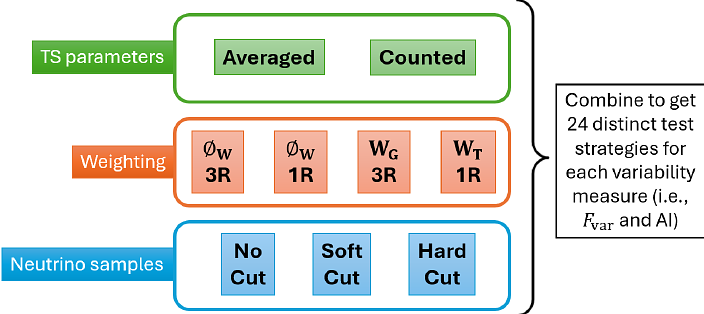Optimizing the Hunt for Extraterrestrial High-Energy Neutrino Counterparts

Optimizing the Hunt for Extraterrestrial High-Energy Neutrino Counterparts
Pouya M. Kouch, Elina Lindfors, Talvikki Hovatta, Ioannis Liodakis, Karri I. I. Koljonen, Kari Nilsson, Jenni Jormanainen, Vandad Fallah Ramazani, Matthew J. Graham
AbstractIt has been a decade since the IceCube collaboration began detecting high-energy (HE) neutrinos originating from cosmic sources. Despite a few well-known individual associations and numerous phenomenological, observational, and statistical multiwavelength studies, the origin of astrophysical HE neutrinos largely remains a mystery. To date, the most convincing associations link HE neutrinos with active galactic nuclei (AGN). Consequently, many studies have attempted population-based correlation tests between HE neutrinos and specific AGN subpopulations (such as blazars). While some of associations are suggestive, no definitive population-based correlation has been established. This could result from either a lack of a population-based correlation or insufficient detection power, given the substantial atmospheric neutrino background. By leveraging blazar variability, we performed spatio-temporal blazar-neutrino correlation tests aimed at enhancing detection power by reliably incorporating temporal information into the statistical analysis. We used simulations to evaluate the detection power of our method under various test strategies. We find that: (1) with sufficiently large source samples, if 20% of astrophysical HE neutrinos originate from blazars, we should robustly observe $\sim$4$\sigma$ associations; (2) a counting-based test-statistic combined with a top-hat weighting scheme (rather than a Gaussian one) provides the greatest detection power; (3) applying neutrino sample cuts reduces detection power when a weighting scheme is used; (4) in top-hat-like weighting schemes, small p-values do not occur arbitrarily with an increase in HE neutrino error region size (any such occurrence is indicative of an underlying blazar-neutrino correlation).